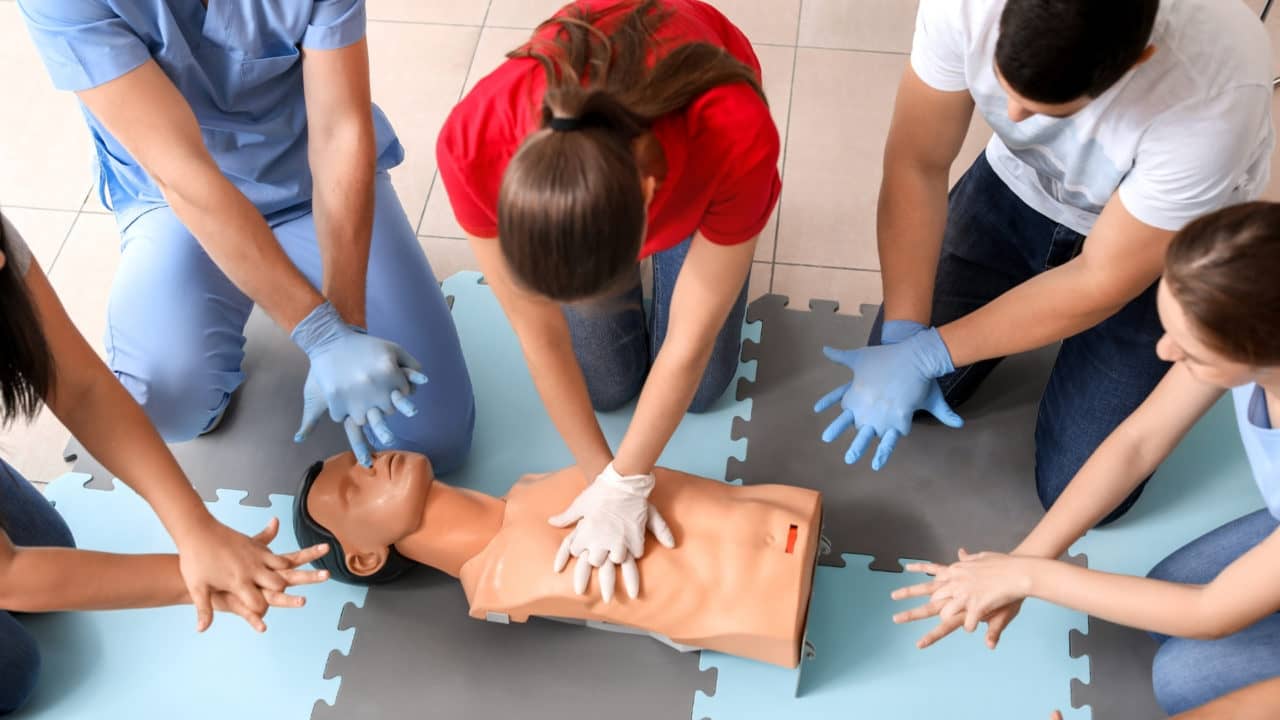Introduction
In today's fast-paced workplace, safety is extremely important. Organizations are significantly acknowledging the significance of developing a safe space for staff members. One of the most vital parts of office security training is initial help and mouth-to-mouth resuscitation (Cardiopulmonary Resuscitation) training courses. These training courses not just empower workers with important life-saving abilities but additionally promote a society of safety and security within the organization. In this write-up, we will delve into the myriad reasons work environment safety training need to include first aid and CPR programs, underscoring their importance in enhancing work environment safety.
Why Workplace Safety Training Need To Consist Of First Aid and CPR Courses
The integration of first aid and mouth-to-mouth resuscitation training courses into office security training has far-ranging advantages. They gear up employees with the expertise and abilities needed to react efficiently to clinical emergency situations, reduce healing time for damaged people, and possibly conserve lives. Furthermore, having educated workers on-site can infuse self-confidence among employees and guarantee them that their wellness is prioritized.
Understanding Very first Aid
First aid refers to the instant treatment offered to a specific suffering from a small or significant ailment or injury until expert clinical assistance arrives. Comprehending fundamental first aid principles can make a considerable difference in emergency situation situations.
Key Elements of First Aid
Assessment: The capacity to examine a scenario swiftly can assist establish the appropriate actions needed. Stabilization: Comprehending how to maintain a wounded person avoids further harm. Communication: Successfully interacting with emergency situation solutions is critical for prompt assistance.The Value of CPR
CPR is a life-saving strategy made use of in emergency situations when somebody's heartbeat or breathing has quit. It entails breast compressions and rescue breaths to keep blood flow and oxygenation until expert help arrives.
How CPR Works
- Chest Compressions: These assist distribute blood throughout the body. Rescue Breaths: These supply oxygen to the lungs.
Benefits of First Aid and CPR Certification
Obtaining an emergency treatment certification or completing mouth-to-mouth resuscitation programs comes with numerous advantages, both for people and organizations.

Creating a Society of Safety Through Training
Implementing first aid and CPR training fosters a society that prioritizes employee health.
Encouraging Teamwork
Training sessions often include team-building exercises that boost partnership amongst employees.
Building Count on In between Staff members and Management
When monitoring invests in employee training, it shows commitment to their health and wellness, causing increased morale.
First Aid Courses vs. CPR Courses: What's the Difference?
While both sorts of courses are vital, they concentrate on different skill sets.
First Help Courses
These programs cover a vast array of topics beyond simply heart emergency situations, consisting of:
- Wound care Burns Choking
CPR Courses
CPR programs especially focus on techniques connected to heart attack situations, highlighting:

- Adult CPR Child/ infant resuscitation Use of an Automated External Defibrillator (AED)
Choosing the Right Training Provider
Not all training service providers are created equivalent; for that reason, choosing one that meets your organization's requirements is critical.

Accreditation Matters
Ensure that your picked provider offers recognized courses acknowledged by appropriate authorities.
Instructor Experience
Consider teachers' credentials; skilled fitness instructors often supply richer understanding experiences through real-world examples.
Incorporating Emergency treatment right into Workplace Safety Policies
Organizations ought to integrate emergency treatment demands right into their broader safety and security policies for detailed coverage.
Regular Training Updates
Conducting routine correspondence course ensures that understanding stays existing among employees.
Creating Emergency Feedback Plans
Having clear plans in position can guide trained personnel during emergencies.
Legal Implications of Emergency treatment Training in the Workplace
Employers have legal obligations pertaining to office safety and security; applying emergency treatment training can aid mitigate risks connected with non-compliance.
Negligence Claims
Failure to supply appropriate training may leave employers susceptible to claims if an occurrence takes place because of lack of preparedness.
FAQ Section
What is included in a regular emergency treatment course?- A typical first aid course consists of direction on evaluating injuries, dealing with wounds, taking care of burns, taking care of choking occurrences, and performing mouth-to-mouth resuscitation if necessary.
- Most CPR training courses last between 4-- 6 hours relying on whether it's basic or sophisticated training.
- While not always legitimately mandated, having accredited employee can significantly enhance office safety standards.
- Many certified organizations provide on-line renewal choices for first aid certifications that include evaluations by means of video clip conferencing.
- Yes, markets such as construction, health care, education, and production often have regulative needs necessitating qualified personnel on site.
- It's recommended that workers join correspondence course every 2 years or faster if there are significant changes in procedures or regulations.
Conclusion
To summarize, incorporating emergency treatment and mouth-to-mouth resuscitation into office safety training is not simply an option but a need in today's workplace where emergencies can arise Click here anytime. Organizations benefit greatly from having actually trained workers all set to react effectively throughout dilemmas while promoting an ambience where worker well-being takes precedence over all else. As a result, it comes to be obvious why workplace safety and security training must consist of emergency treatment and mouth-to-mouth resuscitation programs-- they save lives while advertising a positive strategy toward health and wellness criteria within organizations throughout numerous sectors.
By focusing on such essential training efforts-- emergency treatment certifications obtained via trustworthy suppliers together with sensible hands-on experience-- firms can dramatically improve their total emergency preparedness degrees while additionally developing more powerful teams with the ability of taking on any type of scenario head-on!